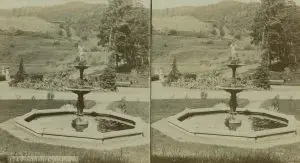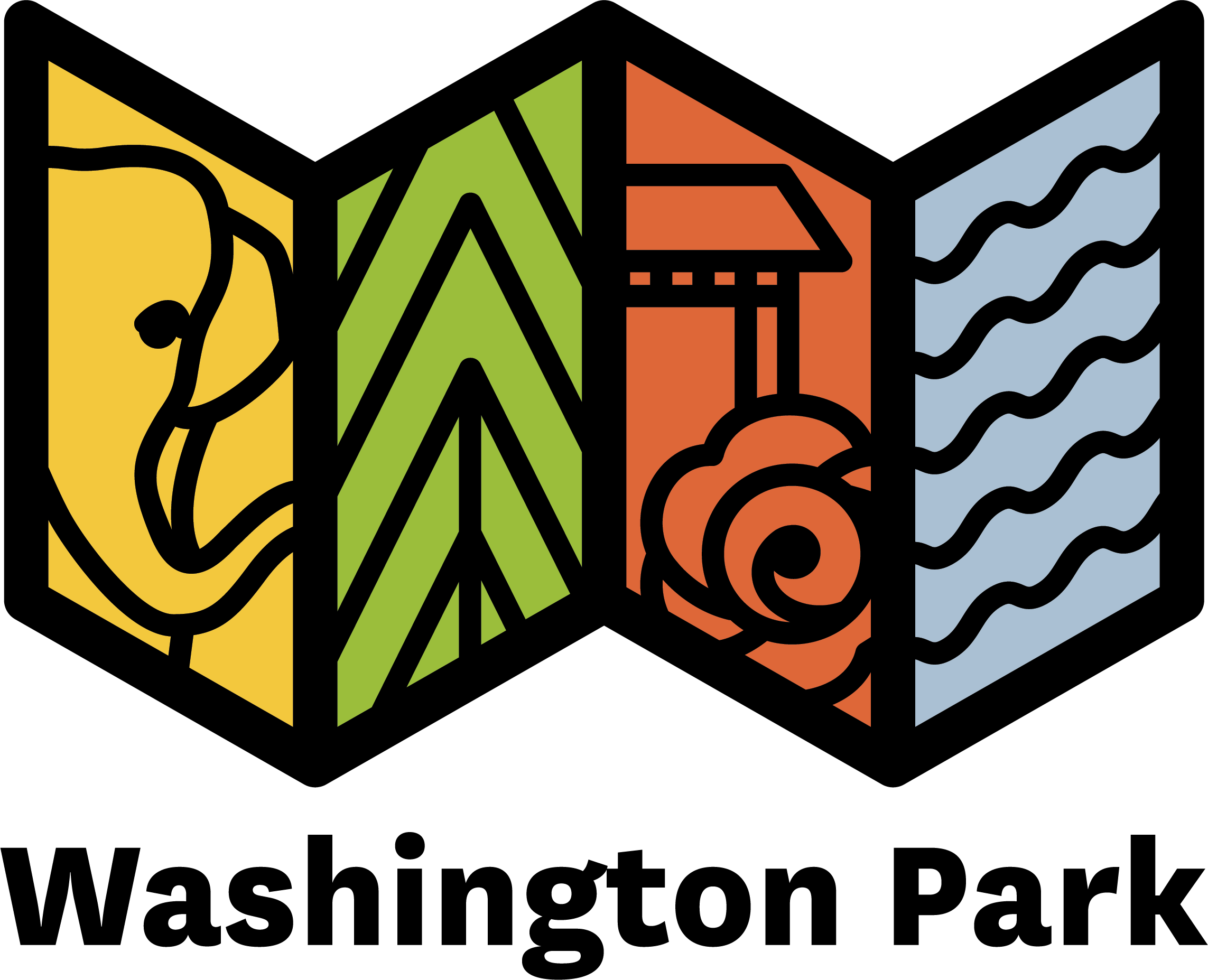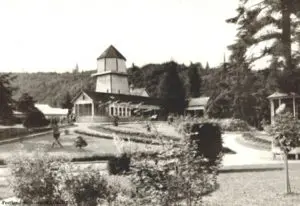
View of Washington Park Fountain (chiming fountain), (City of Portland Archives): A2004-002-6702
The Lewis and Clark Memorial Column was dedicated by President Theodore Roosevelt in May 1903, to honor the discovery of the northwest by the Lewis and Clark Expedition.
Chief Multnomah Statue is a bronze statue of two Native Americans, one depicting Chief Multnomah. Sculpted by Hermon Atkins MacNeil in 1904 and donated by the heirs of David P. Thompson, it faces east along the Oregon Trail.
Sacajawea and Jean-Baptiste is a statue of the famed Shoshone Native American woman who guided the Lewis and Clark Expedition through the mountains. A massive bronze and copper piece unveiled in July 1905, at the Lewis and Clark centennial, it was sculpted by Denver resident Alice Cooper and cast in New York.
Chiming Fountain, also referred to as Washington Park Fountain, is so-called because of the sound the falling water makes. It was created in 1891 by the Swiss artisan woodcarver Hans Staehli in the style of a Renaissance fountain and originally had a statute of a boy carrying a staff from which water spouted. The statute was damaged in a freeze in the 20s and later removed in the 40s.
Loyal B. Stearns Memorial Fountain, erected in 1941 in honor of the former Oregon judge Loyal B. Stearns, is located in the northeastern corner of Washington Park, just south of Burnside Street at the Stearns Canyon pedestrian entrance to the park.
Frank E. Beach Memorial Fountain (officially titled Water Sculpture), a stainless steel fountain located in the Rose Garden, was designed and built by Oregon artist Lee Kelly and dedicated in 1975.
In 2001, a memorial bench and plaque north of the Lewis and Clark Memorial were created to honor the Portland born journalist John Reed. The plaque has a quotation by Reed on his native city.
Holocaust Memorial: The Oregon Holocaust Memorial was dedicated on August 29, 2004 and features a stone bench adorned with wrought-iron gating, screened from the street by rhododendron bushes and a wall that commemorates the people who died in the six killing-center camps of the Holocaust.



